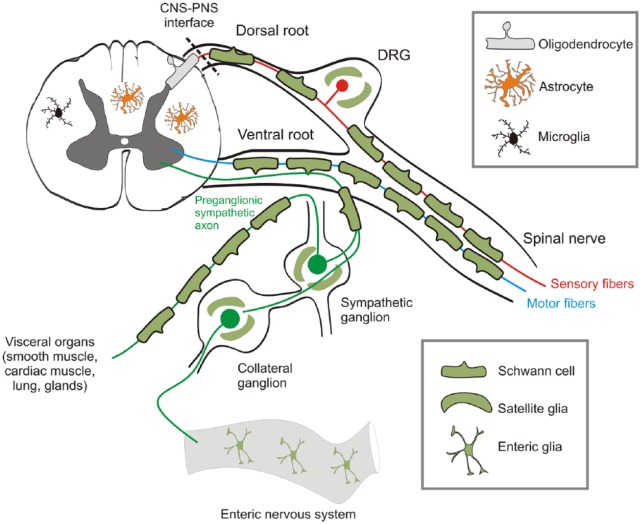Figure 1.
Neuroglial diversity. Neuroglia are sub-classified into CNS and PNS glia, but overall their functions are the same – to provide homeostatic, structural and metabolic support of neurons, to meylinate their axons to ensure rapid signal transmission and to be the main defensive and immunocompetent cells. In the CNS, the main glial cell types are astrocytes, oligodendrocytes and microglia. In the PNS, the main neuroglia are Schwann cells, satellite glial cells within the ganglia and enteric glia, which support neurons within the enteric nervous system of the gastrointestinal tract. The interface between the CNS and the PNS marks a change from an environment of astrocytes, oligodendrocytes and microglia, to one of Schwann cells and satellite glia; there is no change in the axon as it passes from one domain to the other, and PNS and CNS neurons are fundamentally the same. In the broadest sense, CNS and PNS neuroglia are essential for normal bodily function.

